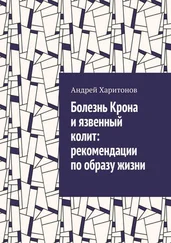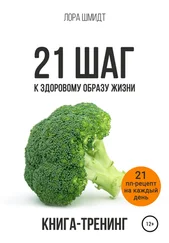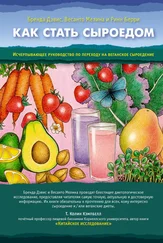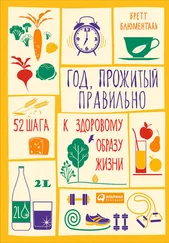59. Vuksan V, Choleva L, Jovanovski E, et al. Comparison of flax (Linum usitatissimum) and Salbachia (Salvia hispanica L.) seeds on postprandial glycemia and satiety in healthy individuals: a randomized, controlled, crossover study. Eur J Clin Nutr . 2017; 71(2): 234–238.
60. Sylvia H. Ley, Osama Hamdy, V. Mohan FBH. Prevention and management of type 2 diabetes: dietary components and nutritional strategies. Lancet . 2014; 383(9933): 1999–2007.
61. Dam RM Van, Seidell JC. Carbohydrate intake and obesity. Eur J Clin Nutr. 2007; 61. Suppl 1: S75–99.
62. Buyken AE, Flood V, Empson M, et al. Carbohydrate nutrition and inflammatory disease mortality in older adults. Am J Clin Nutr . 2010; 3: 634–643.
63. Myles IA. Fast Food Fever: Reviewing the impacts of the western diet on immunity. Nutrition Journal . 2014: 13; 61.
64. DiNicolantonio JJ, Mehta V, Onkaramurthy N, O’Keefe JH. Fructose-induced inflammation and increased cortisol: A new mechanism for how sugar induces visceral adiposity. Prog Cardiovasc Dis . 2018; 61(1): 3–9.
65. Stanhope KL. Sugar consumption, metabolic disease and obesity: The state of the controversy HHS Public Access. Crit Rev Clin Lab Sci . 2016; 53(1): 52–67.
66. Bhardwaj B, O’keefe EL, O’keefe JH. Death by Carbs: Added sugars and refined carbohydrates cause diabetes and cardiovascular disease in Asian Indians. Mo Med . 2016; 113(5): 395–400.
67. Asgari-Taee F, Zerafati-Shoae N, Dehghani M, Sadeghi M, Baradaran HR, Jazayeri S. Association of sugar sweetened beverages consumption with non-alcoholic fatty liver disease: A systematic review and meta-analysis. Eur J Nutr . 2018. (e-pub ahead of print)
68. Liu B, Sun Y, Snetselaar LG, et al. Association between plasma trans-fatty acid concentrations and diabetes in a nationally representative sample of US adults. J Diabetes . 2018; 10(8): 653–664.
69. Dorfman SE, Laurent D, Gounarides JS, et al. Metabolic implications of dietary trans-fatty acids. Obesity . 2009; 17(6): 1200–1207.
70. Tsutsui W, Fujioka Y. Is the association between dietary trans-fatty acids and insulin resistance remarkable in Japan? J Atheroscler Thromb . 2017; 24: 1199–1201.
71. Liu B, Sun Y, Snetselaar LG, et al. Association between plasma trans-fatty acid concentrations and diabetes in a nationally representative sample of US adults. J Diabetes . 2018; 10(8): 653–664.
72. Zhang Q, Yang Y, Hu M, et al. Relationship between plasma trans-fatty acid isomer concentrations and self-reported cardiovascular disease risk in US adults. Int J Food Sci Nutr . 2018; 69(8): 976–984.
73. U.S. Department of Health and Human Services and U.S. Department of Agriculture. 2015–2020 Dietary Guidelines for Americans . 8th Edition. December 2015. URL: http://health.gov/dietaryguidelines/ 2015/guidelines/. Accessed October 29, 2018.
74. Eckel RH, Jakicic JM, Miller NH, et al. 2013 AHA / ACC Guideline on Lifestyle Management to Reduce Cardiovascular Risk A Report of the American College of Cardiology / American Heart Association Task Force on Practice Guidelines. Circulation . 2013: 1–46.
75. Koska J, Ozias MK, Deer J, et al. A human model of dietary saturated fatty acid induced insulin resistance. Metabolism . 2016; 65(11): 1621–1628.
76. Fritsche KL. The science of fatty acids and inflammation. Adv Nutr. 2015; 6(3): 293S–301S.
77. Newsholme P, Keane D, Welters HJ, Morgan NG. Life and death decisions of the pancreatic b-cell: the role of fatty acids. Clin Sci . 2007; 112(1): 27–42.
78. Sacks FM, Lichtenstein AH, Wu JHY, et al. Dietary fats and cardiovascular disease: A presidential advisory from the American Heart Association. Circulation . 2017; 136(3): e1–e23.
79. U.S. Deparment of Agriculture. Agriculture Research Service. Nutrient Data Library. USDA National Nutrition Database for Standard Reference, Legacy Version Current: April 2018. URL: https://ndb.nal.usda.gov/ndb/search/list.
80. Fabricio G, Malta A, Chango A, De Freitas Mathias PC. Environmental contaminants and pancreatic beta-cells. J Clin Res Pediatr Endocrinol . 2016; 8(3): 257–263.
81. Magliano DJ, Loh VHY, Harding JL, et al. Persistent organic pollutants and diabetes: A review of the epidemiological evidence. Diabetes Metab . 2014; 40(1): 1–14.
82. EFSA. Cadmium dietary exposure. EFSA Journal. 2012; 10(1): 1–37.
83. Evangelou E, Ntritsos G, Chondrogiorgi M, et al. Exposure to pesticides and diabetes: A systematic review and meta-analysis. Environ Int . 2016; 91: 60–68.
84. Liu G, Zong G, Wu K, et al. Meat cooking methods and risk of type 2 diabetes: Results from three prospective cohort studies. Diabetes Care . 2018; 41(5): 1049–1060.
85. Stallings-Smith S, Mease A, Johnson TM, Arikawa AY. Exploring the association between polycyclic aromatic hydrocarbons and diabetes among adults in the United States. Environ Res . 2018; 166: 588–594.
86. Abdel-Shafy HI, Mansour MSM. A review on polycyclic aromatic hydrocarbons: Source, environmental impact, effect on human health and remediation. Egypt J Pet . 2016; 25(1): 107–123.
87. Vlassara H, Uribarri J. Advanced Glycation End Products (AGE) and Diabetes: Cause, Effect, or Both? Curr Diab Rep . 2014; 14(1): 453.
88. Nowotny K, Jung T, Höhn A, Weber D, Grune T. Advanced glycation end products and oxidative stress in type 2 diabetes mellitus. Biomolecules . 2015; 5(1): 194–222.
89. Velasquez MT, Ramezani A, Manal A, Raj DS. Trimethylamine n-oxide: The good, the bad and the unknown. Toxins (Basel) . 2016; 8(11).
90. Janeiro M, Ramírez M, Milagro F, et al. Implication of trimethylamine n-oxide (tmao) in disease: Potential biomarker or new therapeutic target. Nutrients . 2018; 10(10): 1398.
91. Samraj AN, Pearce OMT, Läubli H, et al. A red meat-derived glycan promotes inflammation and cancer progression. Proc Natl Acad Sci . 2015; 112(2): 542–547.
92. Alisson-Silva F, Kawanishi K, Varki A. Human risk of diseases associated with red meat intake: Analysis of current theories and proposed role for metabolic incorporation of a non-human sialic acid. Mol Aspects Med . 2016; 51: 16–30.
93. Erridge C. The capacity of foodstuffs to induce innate immune activation of human monocytes in vitro is dependent on food content of stimulants of Toll-like receptors 2 and 4. Br J Nutr . 2011; 105(01): 15–23.
94. Piya MK, Harte AL, McTernan PG. Metabolic endotoxaemia: Is it more than just a gut feeling? Curr Opin Lipidol . 2013; 24(1): 78–85.
95. Fei N, Zhao L. An opportunistic pathogen isolated from the gut of an obese human causes obesity in germfree mice. ISME J . 2013; 7(4): 880–884.
96. White D, Collinson A. Red meat, dietary heme iron, and risk of type 2 diabetes: The involvement of advanced lipoxidation endproducts. Adv Nutr . 2013; 4: 403–411.
97. Radzeviciene L, Ostrauskas R. Adding salt to meals as a risk factor of type 2 diabetes mellitus: A case-control study. Nutrients . 2017; 9(1): 67.
98. Horikawa C, Yoshimura Y, Kamada C, et al. Dietary sodium intake and incidence of diabetes complications in Japanese patients with type 2 diabetes: analysis of the Japan Diabetes Complications Study (JDCS). J Clin Endocrinol Metab . 2014; 99(10): 3635–3643.
99. Colosia AD, Palencia R, Khan S. Prevalence of hypertension and obesity in patients with type 2 diabetes mellitus in observational studies: a systematic literature review. Diabetes Metab Syndr Obes . 2013; 6: 327–338.
100. Suckling RJ, He FJ, Markandu ND, MacGregor GA. Modest salt reduction lowers blood pressure and albumin excretion in impaired glucose tolerance and type 2 diabetes mellitus. Hypertension . 2016; 67(6): 1189–1195.
Читать дальше
Конец ознакомительного отрывка
Купить книгу
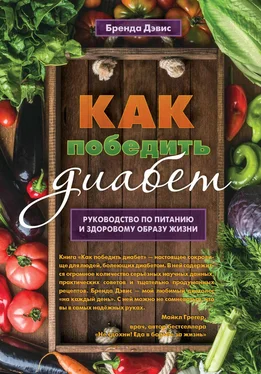

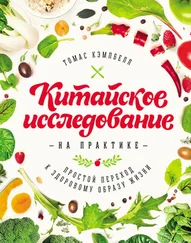

![Карин Дина - Справочник сыроеда [Краткое руководство по питанию свежей растительной пищей]](/books/389267/karin-dina-spravochnik-syroeda-kratkoe-rukovodstvo-thumb.webp)

